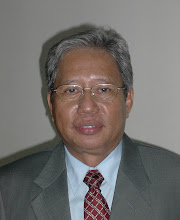A memorandum of understanding (MoU) was signed in December 1st, 2008, between Sarawak River Board (SRB) and Usains Holding Sdn Bhd for Study on Inventory and Monitoring Programme. The study is a year long that focus on Sarawak River, amongst others to enhance the telemetry system, and it will cost Rm 300,000. According to Dr. Stephen Rundi Utom, the Chairman of SRB, budget for study is a federal finance from the Ministry of Natural Resources and Environment. It is expected that more finance will be available for other big rivers in Sarawak.
Detailed information on the project components were elaborated by Dr. Lai Sai Hin from the River Engineering and Urban Drainage Research ( REDAC, one of research center from University Sains Malaysia) as follows:
Detailed information on the project components were elaborated by Dr. Lai Sai Hin from the River Engineering and Urban Drainage Research ( REDAC, one of research center from University Sains Malaysia) as follows:
- To monitor and give warning on river polluting activities, such as illegal dumping
- To create a river profile for navigational and sediment control, and connect it with a digital network at the SRB headquarters.
- To develop a network for advance warning in an emergency by giving info on water level and warning of flood
- A River Information Centre (RIC) would be set up for public to seek information and data on Sarawak's rivers.
Source: The Borneo Post, Tuesday, December 2, 2008.

Comments
Thanks in advance.